- Whether a headstone goes at the head or the feet is a common query
- In most cases, headstones are placed at the head-end of a grave
- This means that the body is positioned in front of the marker
- Modern cemetery rules and layout can pose exceptions to this approach
Where is the headstone placed on a grave? While the answer may seem obvious to some, a headstone should follow its namesake and be placed at the head. However, this is not always the case and can vary in some circumstances. This article details why things aren’t as straightforward as they seem and how you can determine the right approach.
What are Headstones?

A headstone is an identifying marker that is placed over a grave. In the funeral industry, the terms headstone, grave marker, gravestone, and tombstone are often used interchangeably. This does not mean they are the same thing, although they all include a name, date of birth, and date of death. Many markers are also inscribed with epitaphs or prayers.
What is a Footstone?
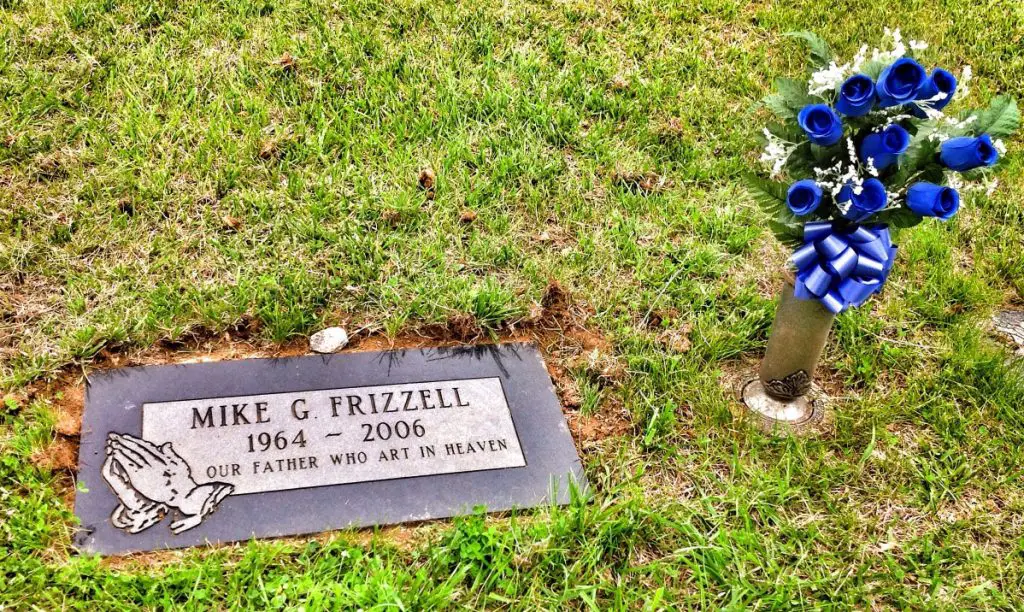
A footstone or foot marker is a flat square monument made of stone that sits at the foot-end of a grave. They were originally commissioned together with a headstone to signal the length of a burial site. This served two key functions – to prevent people from walking over the bodies laid underneath out of respect, and to ensure there was no risk of excavation from surrounding burials.
While they were an accessory to the main headstone, the use of a footstone on its own to mark a person’s final resting place is becoming mainstream. This is due to cost savings as well as cemetery layout rules.
Footstone Prices
While the average price of a headstone is $2,000 and upwards, a footstone will cost approximately $1,000. This figure will vary depending on the choice of material, supplier, and the complexity of engraving.
Where is the Headstone Placed on a Grave?
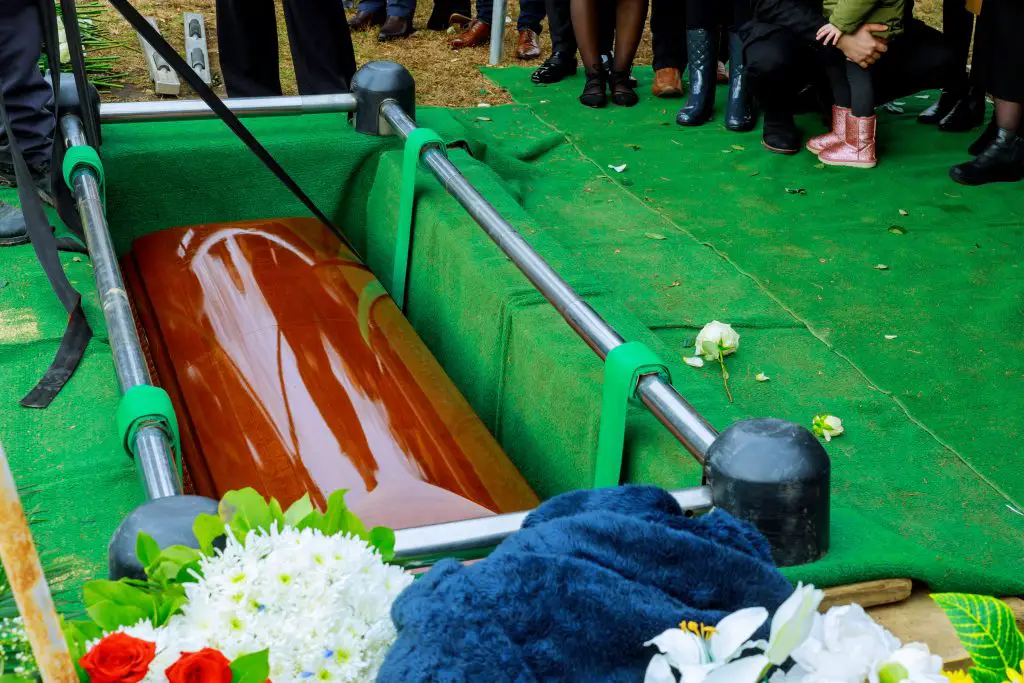
As implied by the name, a headstone is usually placed at the head of a grave to both identify and memorialize a person. This approach has roots in Christian tradition, where a marker would be set with the head of the deceased to the west while their feet pointed east. The placement of bodies this way meant that those departed will face the rising sun and Jesus upon his resurrection.
Can anyone put a headstone on a grave?
For public cemeteries, you require a deed of grant citing that you are the lawful owner of the burial plot to install a headstone. This person is usually the executor of the will. Note that those registered as grave owners are still bound by the regulations and design standards of the cemetery.
Headstone placement for couples
The use of companion headstones is a popular option for couples who wish to be buried together. In this scenario, a headstone or grave marker is centered at the head of both deceased. You will typically find that the husband is buried on the left with his wife on the right. This follows biblical traditions where special honor is extended to those on the right-hand side.
Cemetery headstone placement

While the majority of burials have the headstone placed at the head, modern cemeteries adopt a variety of orientations. The rules of placement are now dictated by the design of the burial ground and the best use of available space. This means that factors such as maintenance, the landscape of sites, and practical considerations such as pedestrian access will dictate where a headstone sits.
You will find that each cemetery has unique regulations around the type and style of headstone to use, along with standards for installation. These standards may also vary between sections of the grounds (e.g. granite monuments only in one area while another strictly allows flat plaques).
Less stringent cemeteries allow the family to select their preferred orientation. This has resulted in further confusion around headstone placement being at either the head or the feet. If you are keen on one style of marker, ensure that you check with the cemetery before purchasing the burial plot.
Headstone placement – why the confusion?
On top of differing cemetery rules, knowing where a headstone sits on a grave is confusing due to growing footstone use. More recently, footstones have been popularized due to the layout of family plots or the general lack of space. To the untrained eye, it is hard to distinguish between a flat gravestone (placed at the head) and a foot marker or footstone (placed at the feet).
Instead of just marking grave boundaries, footstones are now used as standalone memorials. This is common in modern cemeteries where foot markers are often used instead of a headstone. The general public is largely unaware of this change, leading to a mix-up of headstone placement ideals.
Headstone Placement for Different Cemetery Types
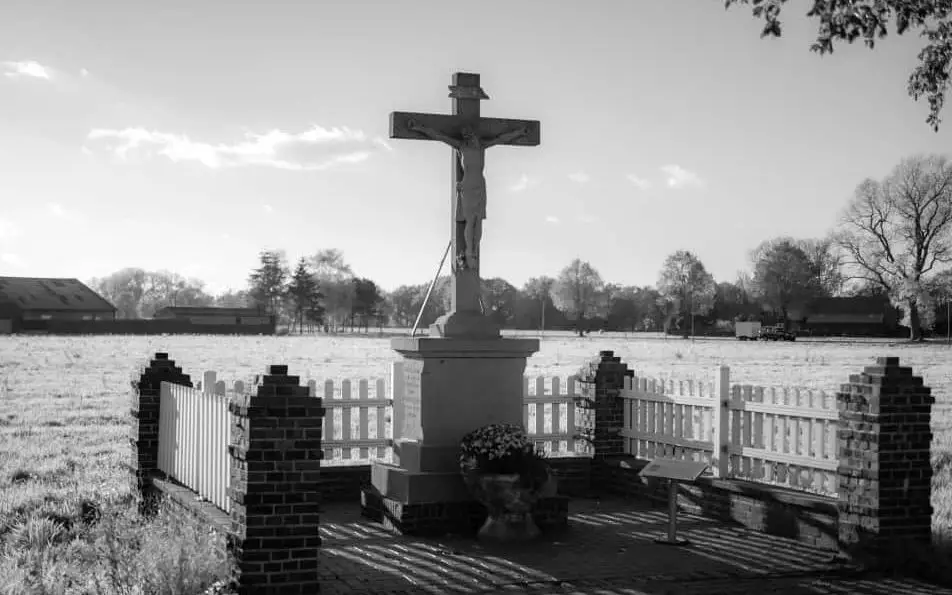
Certain burial plot types or sections within a cemetery will have varied rules for headstone placement. In these scenarios, it isn’t immediately clear whether a headstone goes at the head or feet. These include:
Family burial plots
Some cemeteries offer family plots that allow many graves to be interred around a single large headstone or monument. As each family member passes, the individual is buried with their head facing the marker and an identifying footstone at their feet. This arrangement resembles a cluster around the centered headstone.
Plots for cremated remains
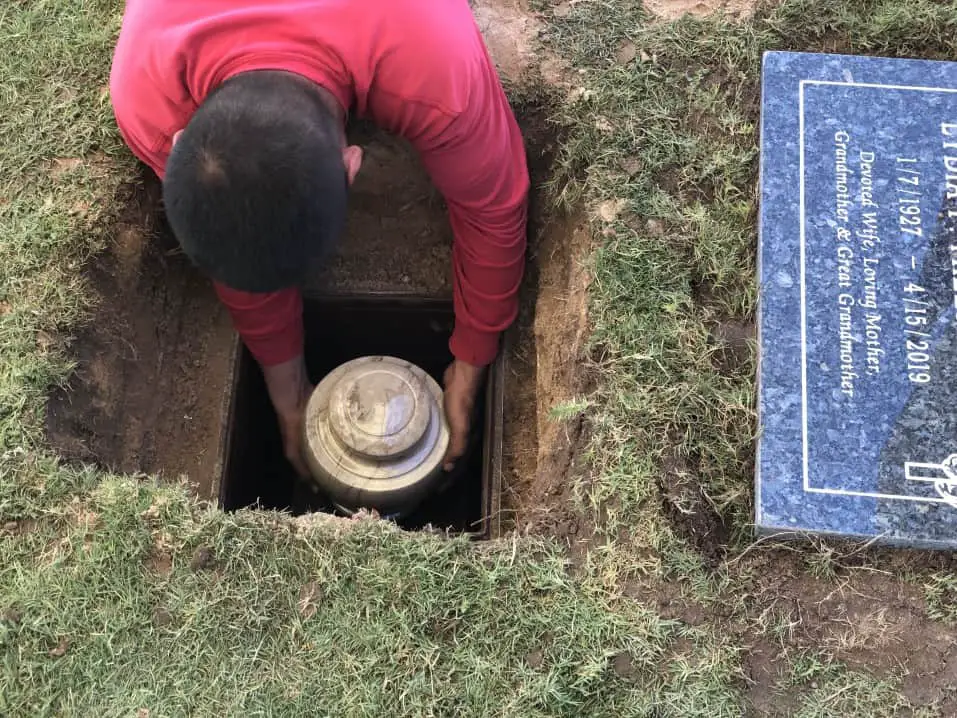
A popular option for families is to keep cremated remains of their loved one in a cemetery plot or columbarium niche. Where a cemetery plot is used, a box or urn containing the ashes may be buried alongside surrounding caskets.
As this is not evident from ground level, a headstone or marker may appear to sit at the “wrong” end of a grave – when in reality, it is adjacent to the cremated remains. Many cemeteries also allow several urns to be buried in a single plot which can create more confusion.
Urban park or garden cemeteries
This type of burial ground was first developed as a solution to address land shortages. The creation of garden cemeteries meant that the deceased could be interred within public park settings, while the community could still use the area for recreation and rest.
Horticulturalists designed these parks so that headstones blended in with the landscape – upright headstones were largely done away with in favor of smaller, flat markers. These markers are usually placed at the feet rather than the head area. Where a headstone is used, it is not always placed at the head of a grave as garden cemeteries do not adhere to the symmetry of a traditional burial ground.
Military graves
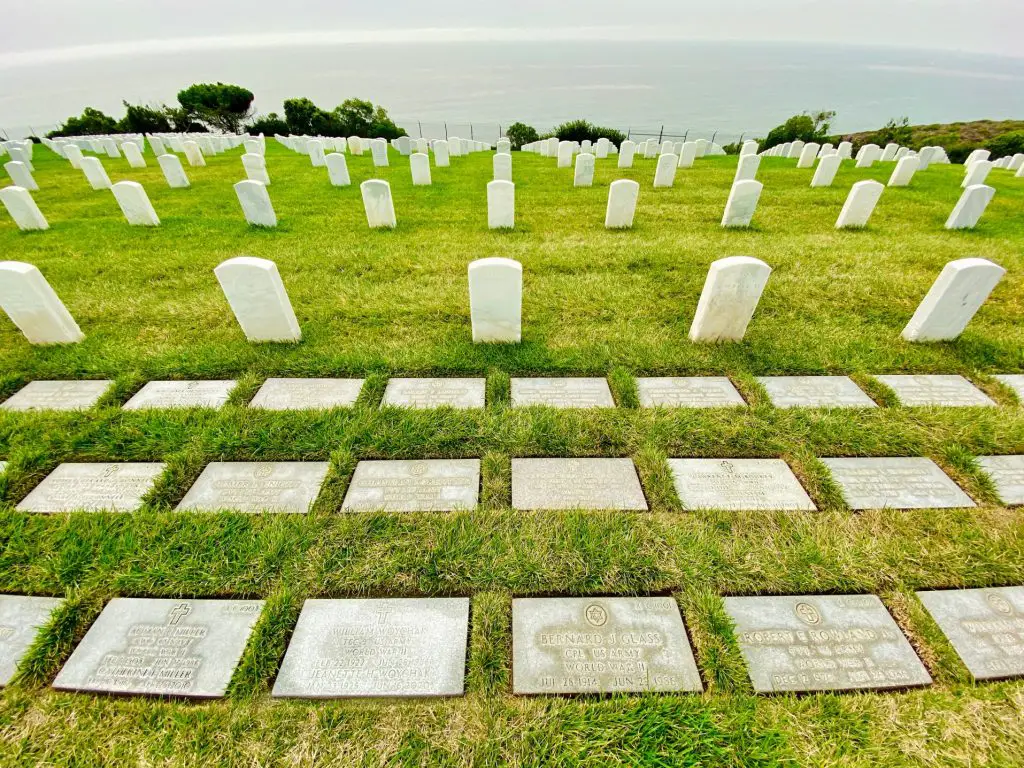
There are quite a few public misconceptions about headstone placement for those who have served in the military. Due to the proximity of grave markers in some military cemeteries, some falsely believe that the body is buried standing upright. The likely explanation is that the remains have been cremated and are buried closely together.
Veterans Affairs also provides free grave markers in recognition of military service. In most circumstances, Veterans are buried with a headstone placed at the head end. However, headstones are also provided where the remains are not available (e.g. due to missing bodies in action, burial at sea, etc.). These markers look like they sit atop a grave but in reality, they serve as a memorial above vacant land. You can identify a vacant grave as the wording “In Memory Of” will be engraved on the headstone.
Quirky Headstone Placement Traditions
Some cultures and customs clearly don’t align with the “headstone placed at the head” rule. Many do away with having any form of marker at all. These include:
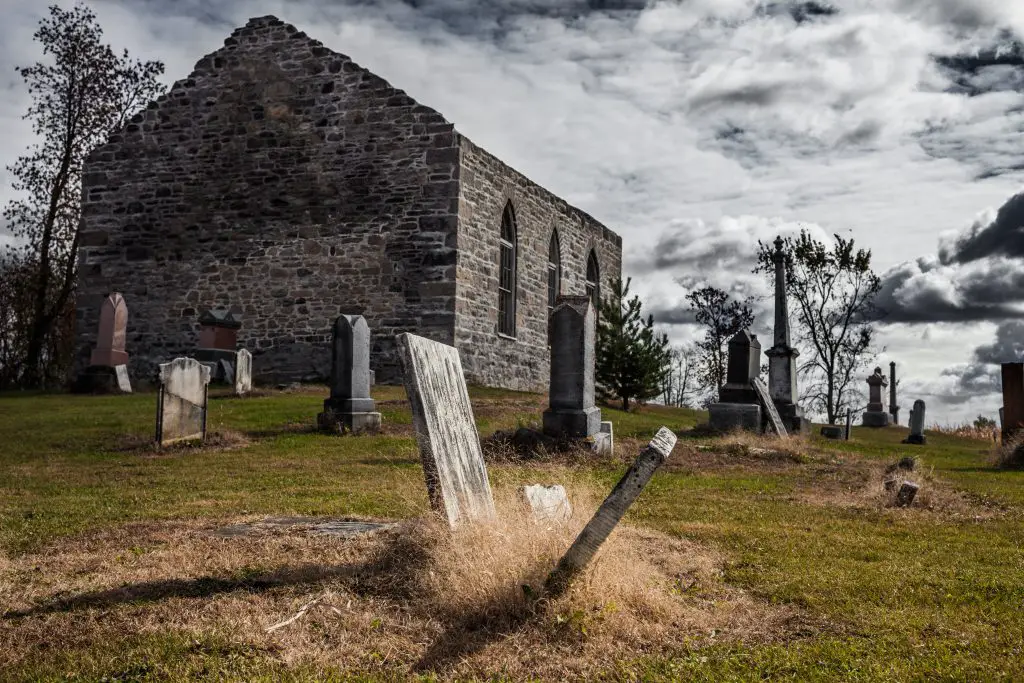
- Church ministers are buried in a graveyard in the opposite direction to deceased parishioners. This was so that they could face their congregation during the resurrection.
- Modern natural burials where grave locations are tracked by GPS rather than physical markers.
- The Bo people of Sichuan, China hung coffins from the cliffside of mountains and inside of caves. They believed that this would prevent animals from poaching bodies while maintaining land for farming.
- Out of fear that the dead would rise up and create havoc, some cultures placed heavy tombstones on top of stone coffins. This was thought to stop ghosts from escaping.
- As graveyards hit capacity in the nineteenth century, bodies were commonly buried en masse underneath public buildings and churches.
- Buddhists in Tibet commonly practice sky burials. This involves leaving the deceased outside for consumption by birds and other wildlife.
- Caviteño people in the Philippines will choose a tree to be entombed within before death. Family members will arrange for the tree to be hollowed out before burying their loved one within the trunk vertically.
- Many bodies of those who had taken their own lives in England between 1660 and 1800 were buried face-down with a wooden stake driven through them. This post-mortem punishment occurred as suicide was viewed as a grave sin.
- According to international law, a ship captain has the right to conduct a burial service at sea. The deceased is usually sewn into a burlap bag (sometimes adorned with their country’s flag) before being dropped into the water.
Headstone Placement FAQs

What is the difference between a gravestone and a headstone?
A headstone is an upright monument usually made of granite that sits at the head of a grave. A gravestone or grave marker is a flat stone or bronze plaque that sits either slanted or level with the ground. In either case, both headstones and gravestones serve as an identifying marker for the deceased, each with an option for personalization.
What is the difference between a graveyard and cemetery?
A cemetery is a place where the deceased are buried or laid to rest. They are often large expanses of land that can be sectioned into different areas (e.g. by headstone style, ethnicity, religious affiliation, etc.).
A graveyard is also a place where people are buried following death. The distinction between this and a cemetery is that they are located within church grounds. This means that those interred are members of the religion and the size of a graveyard is usually smaller than a public cemetery.
What does putting a stone on a grave mean?
This Jewish custom is an act of respect and honor for the deceased and is thought to strengthen the bond to those who have passed. Other interpretations for putting a stone on a grave include keeping the person’s soul on earth and to prevent demons from entering.
Is it disrespectful to stand on a grave?
Some people believe in the superstition that standing on a grave is back luck. This is likely where the view that doing so is disrespectful and should be avoided. However, the narrow arrangement of some cemeteries will make this unavoidable. In this case, it is acceptable to walk over a grave, but do not stand or lean on the headstone or cause any damage to the marker.






